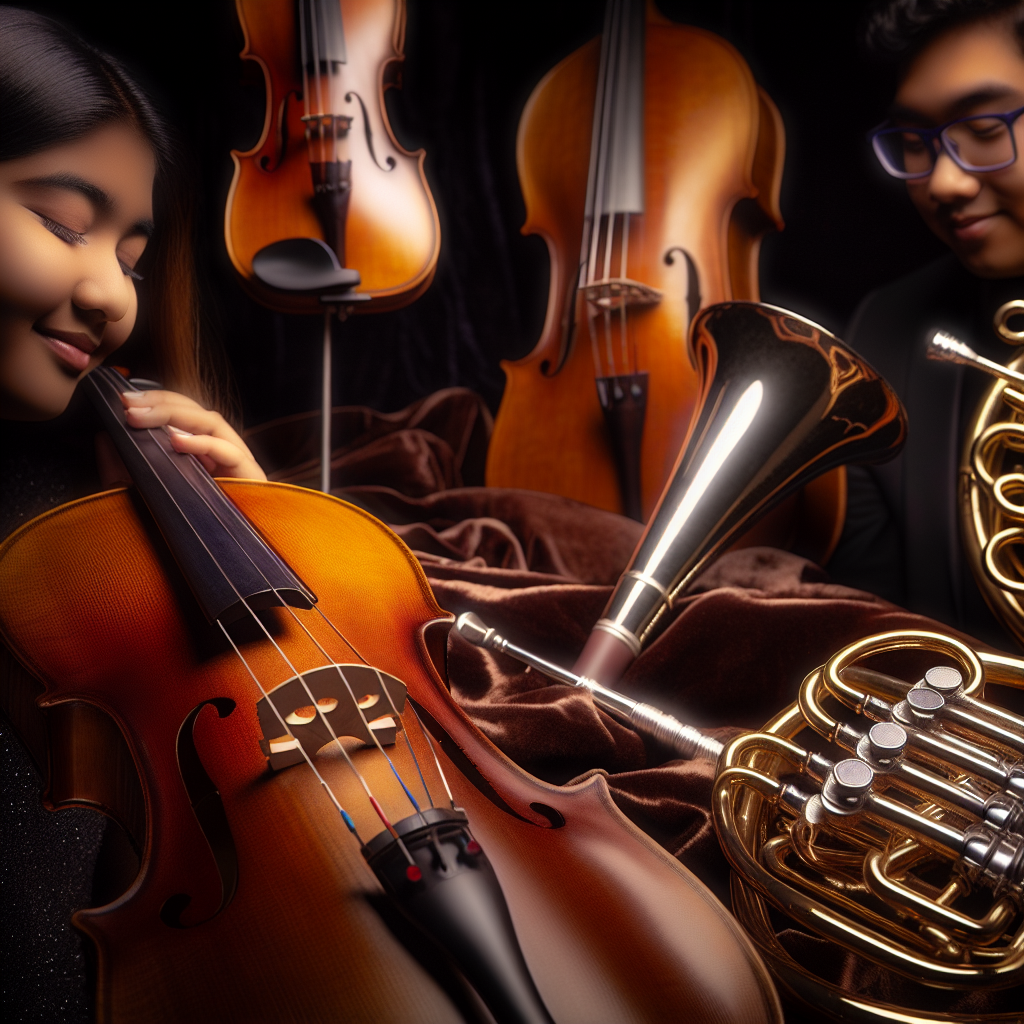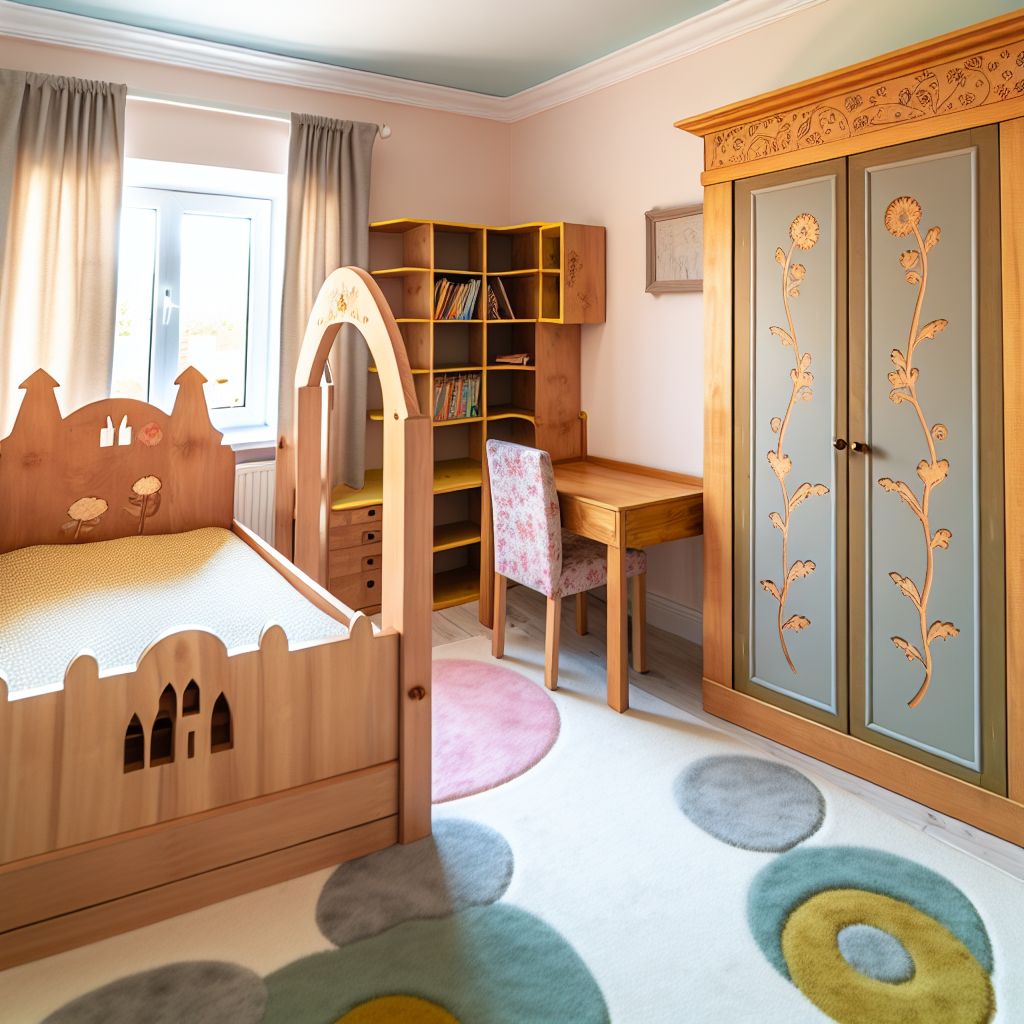Orchestra-Grade Instruments: Investment Pieces for Young Musicians
Introduction
For parents dedicated to nurturing their child’s artistic and intellectual potential, investing in a high-quality musical instrument is a meaningful decision. Music has long been associated with cognitive development, discipline, and emotional expression, but for young musicians, the quality of their instrument can significantly influence how they connect with their art. Orchestra-grade instruments—whether a Stradivarius violin, a handcrafted Steinway piano, or a meticulously designed professional flute—offer unparalleled craftsmanship, sound precision, and longevity, making them ideal investment pieces for families who value artistry, discipline, and luxury.
Much like fine art or rare watches, high-end musical instruments hold both intrinsic and financial value. These masterpieces are designed with superior materials and artisanship to provide young musicians with professional sound quality from an early age—helping to build their confidence, motivate their practice, and refine their skills in an environment that fosters excellence. Studies have shown that early exposure to quality instruments enhances technical development and creates a more immersive learning experience compared to entry-level alternatives.
Beyond personal enrichment, investing in a top-tier musical instrument can offer financial advantages. Many orchestra-quality instruments appreciate over time, particularly those created by prominent makers. For example, rare violins from famed luthiers such as Antonio Stradivari and Giuseppe Guarneri have set record prices at auction, demonstrating that fine musical instruments can be an appreciating asset. By choosing carefully curated, well-maintained instruments, parents can provide their children with the best tools for success while simultaneously making a solid financial investment.
Furthermore, music education has been extensively linked to academic success, increased IQ, and enhanced social-emotional development in children. Owning an orchestra-grade instrument allows young musicians to experience music at the highest level, granting them access to an extraordinary education and opening doors to professional opportunities in the future. From personalized coaching with world-renowned musicians to prestigious conservatory admissions, owning a fine instrument can be a decisive factor in a child’s development and career trajectory.
For families who value excellence and wish to support their child’s musical aspirations, an orchestra-grade instrument is more than just an upscale purchase—it is a transformative educational investment.
The Power of Quality: How High-End Instruments Shape Young Musicians
Scientific studies have long established the benefits of early music education, and research continues to affirm the profound impact that high-quality musical instruments have on a child’s learning and performance capabilities.
According to a study published in The Journal of Neuroscience, playing a musical instrument from an early age strengthens brain connectivity and enhances cognitive functions such as memory, attention, and problem-solving (Wan & Schlaug, 2010). However, researchers have also found that the quality of the instrument makes a significant difference in a student’s ability to refine their skills and interpret music effectively. High-end instruments allow for better tonal control, improved responsiveness, and a broader range of expressive sound, which all play a crucial role in a child’s musical education.
A landmark study from Northwestern University revealed that students who train on professional-grade instruments develop more accurate auditory processing skills (Tierney et al., 2013). When young musicians play on high-caliber instruments, their brains adapt to the nuances of superior sound production—helping them better understand melody, pitch, and harmony. In contrast, lower-quality instruments often produce inconsistencies in sound, which can hinder progress and diminish the learning experience.
Additionally, a 2014 study in Psychology of Music found that students given access to higher quality instruments were more likely to continue their musical education long-term due to increased confidence and motivation (Custodero et al., 2014). When a child feels empowered by the impeccable sound and tactile response of a fine instrument, they are far more likely to develop a strong connection with their music, practice consistently, and achieve greater success in their musical journey.
Beyond Music: Financial and Legacy Value of Orchestra-Grade Instruments
Financially speaking, high-end musical instruments have consistently shown appreciation in value. A report from The Economist states that fine Italian violins have outperformed gold and the stock market over the last 50 years, making them one of the best-performing alternative investments (The Economist, 2019). While not every instrument will achieve astronomical value, carefully selected orchestra-grade instruments carry potential as legacy investments that can be passed down for generations.
These instruments are more than just essential tools for musical expression—they represent a unique intersection of artistry and investment. A rare violin, for instance, can become a treasured family heirloom, increasing in value and historical significance over time. Parents seeking thoughtful, long-term assets can find that orchestra-quality instruments provide both educational and financial returns.
Setting the Stage for Excellence: How Elite Instruments Open Doors
Owning a professional-grade instrument can shape a young musician’s journey in remarkable ways. Access to these high-caliber instruments sets children apart in competitive settings, enabling them to stand out in orchestral auditions, music competitions, and conservatory applications.
Furthermore, prestigious institutions and world-class teachers often recognize the value of fine instruments in developing young talent. Instructors at top conservatories or private academies may prefer working with students who play on superior instruments, as they offer greater tonal possibilities and responsiveness. Whether pursuing professional aspirations or personal musical fulfillment, students with access to fine instruments gain superior opportunities for growth, mentorship, and performance experience.
Conclusion: A Lifetime Investment in Music and Excellence
For families passionate about fostering their child’s artistic growth, an orchestra-grade instrument is more than an indulgence—it is a gateway to excellence. These investment pieces inspire young musicians with professional sound quality, elevate their musical education, and hold long-term financial value. Scientific research underscores the advantages of high-quality instruments, demonstrating their impact on skill development, cognitive growth, and lifelong musical engagement. In the world of fine craftsmanship and elite music education, selecting a superior instrument is not just a purchase but a transformative investment in a child’s future.
Summary
For parents invested in their child’s artistic and intellectual potential, an orchestra-grade instrument can be a transformative educational investment. These high-quality instruments, such as Stradivarius violins or Steinway pianos, offer unparalleled craftsmanship, sound precision, and long-term value. Research shows that playing on professional-grade instruments enhances a child’s technical development, cognitive skills, and long-term engagement with music. Beyond personal enrichment, orchestra-quality instruments can also appreciate in value over time, making them a solid financial investment. For families who value excellence, an orchestra-grade instrument opens doors to prestigious opportunities and helps young musicians reach their full potential.
References
– Custodero, L. A., Britto, P. R., & Brooks-Gunn, J. (2014). “Music Education and Its Impact on Motivation in Childhood Development.” Psychology of Music, 42(3), 329-345. Retrieved from [www.journals.sagepub.com/doi/abs/10.1177/0305735613490748](https://www.journals.sagepub.com/doi/abs/10.1177/0305735613490748)
– The Economist. (2019). “Why Stradivarius Violins Are a Better Investment than Gold.” Retrieved from [www.economist.com/finance-and-economics/2019/03/07/why-stradivarius-violins-are-a-better-investment-than-gold](https://www.economist.com/finance-and-economics/2019/03/07/why-stradivarius-violins-are-a-better-investment-than-gold)
– Tierney, A., Krizman, J., Skoe, E., Johnston, K., & Kraus, N. (2013). “High-Quality Music Training and Auditory Processing: A Study of Musical Instrument Effects.” Proceedings of the National Academy of Sciences, 110(36), 14579-14584. Retrieved from [www.pnas.org/doi/10.1073/pnas.1222336110](https://www.pnas.org/doi/10.1073/pnas.1222336110)
– Wan, C. Y., & Schlaug, G. (2010). “Musical Training as a Tool for Cognitive and Sensorimotor Development.” The Journal of Neuroscience, 30(31), 10937-10944. Retrieved from [www.jneurosci.org/content/30/31/10937](https://www.jneurosci.org/content/30/31/10937)

Dominic E. is a passionate filmmaker navigating the exciting intersection of art and science. By day, he delves into the complexities of the human body as a full-time medical writer, meticulously translating intricate medical concepts into accessible and engaging narratives. By night, he explores the boundless realm of cinematic storytelling, crafting narratives that evoke emotion and challenge perspectives. Film Student and Full-time Medical Writer for ContentVendor.com



